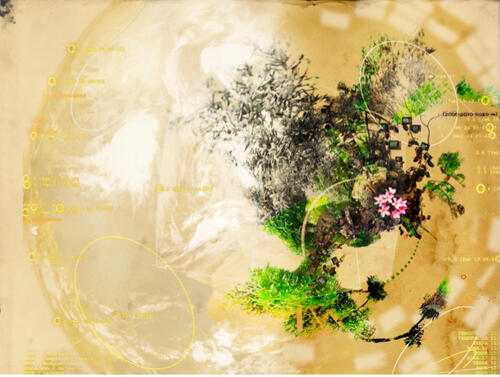Table of Contents
groWorld at ArtScience
Research Group ArtScience 20120130 – 20120315
Participants: Daniel Berio, Clara Lozano Carrasco, Andre Cavalheiro, Mischa Daams, Gaby Felten, Samantha Groesbeek, Katarina Jancovicova, Eveline Klop, Mik Maes, Falco Pols, Ludmila Rodrigues, Yaprak Sayar, Marloes van Son, Thijs van Teijlingen, Loes Treffers, Heayoung Yang, Arjen Zuidgeest, Walid Wardak, Gerrit-Jan Scheepers
Facilitators: Cocky Eek and Maja Kuzmanovic
Research ArtScience participants:
- various links, notes, movies -ArtScience GroWorld- participants: project_groworld_general_compost_artscience
- Ludmila: Energy flux: project_groworld_energy_flux
- Andre: Nature is divine: project_groworld_divine_nature
- Walid: Homo Sapperdeflap: project_groworld_homo_sapperdeflap
- Arjen: Plant Heroes / Plant Humor / Growing a House: http://epilepticaspectus.com/groworld
- Samantha & Heayoung: human-plant characteristics:project_groworld_humanplantcharacteristics
- Katarina, Loes, Thijs & Gaby: SeedBalls project_groworld_seedball
- Yaprak & Eveline?!: 'whosayswaht' http://youtu.be/Hg6zvf6oSOA
- Falko & Gerrit-Jan project_groworld_alfa sound garden
- Clara: sound mixing reality and “gameing”
- Daniel: Plant interaction project_groworld_sqroot
flickr. foto set: Groworld ArtScience: http://www.flickr.com/photos/foam/sets/72157629205047255/
Exercise menu including instructions for co-creation exercises
groWorld recipes from the closing event on the 15 march 2012 at Korzo in Den Haag
Recommended keynote lecture ||||| monday march 5:
Isabelle Stengers: Cosmopolitics - Learning to Think with Sciences, Peoples and Natures
7:30PM streamed online at http://WWW.SITUSCI.CA/
more see: http://www.situsci.ca/event/isabelle-stengers-cosmopolitics-learning-think-sciences-peoples-and-natures
Guests Speakers :
-06 02 2012: Claud Biemans on Plant Communication
-09 02 2012: Theun Karelse on Augmented Ecology
-16 02 2012: Nik Gaffney and Joost Rekveld; feedback
-20 02 2012: Auriea and Michaël from Tale of Tales
-23 02 2012: Paola Orlic on Patabotanical Tarot
-12 03 2012: Duncan Speakman (BE) on subtlemobs and Matt Wietseka (UK) from -Six to Start- on augmented realitys in urban environments; open to all departments.
Plants as organisational principles
“The ultimate goal of farming is not growing of crops, but cultivation of human beings.” -Masanobu Fukuoka
Our present global crisis is more profound than any previous historical crises; hence our solutions must be equally drastic. I propose that we should adopt the plant as the organizational model for life in the twenty-first century, just as the computer seems to be the dominant mental/social model of the late twentieth century, and the steam engine was the guiding image of the nineteenth century. This means reaching back in time to models that were successful fifteen thousand to twenty thousand years ago. When this is done it becomes possible to see plants as food, shelter, clothing, and sources of education and religion. -Terrence McKenna
Background
In his essay “Plan/Plant/Planet,” Terrence McKenna proposed that plants could represent organisational principles for life in the 21st century (McKenna 1992). What would our response to climate change, economic downturn and other contemporary turbulences be if the majority of humanity embraced the slowness, introspection and resilience of a vegetal culture, working with whole life-cycle systems, renewable technologies and other characteristics of plant life? Plants are able to both sustain themselves and replenish their surroundings – from purifying the air and fertilising the soil to recycling waste and producing energy.
The interconnectedness of the human and the vegetal has been a recurring theme in art, science and religion for millennia. Think of Hildegard of Bingen's Viriditas, The Voynich Manuscript, Andy Goldsworthy's poetic works, Cleve Backster's biocommunication experiments, or the imaginative crescographs by Jagdish Chandra Bose and Randall Fontes. Nowadays, at the crux of art and culture, gardening and technology we might be able to comprehend how plants can become organisational principles for our lives in the turbulent times of the 21st century. How do we instill the values of a vegetal culture into today's fast-paced, predatory consumer societies? How can we intertwine pre-industrial, even archaic relationships between humans and plants with new technologies? What is the range of possible human-plant interactions, beyond the merely functional food and fuel? Can we invoke a vegetal future through alternate realities and storytelling? What can we learn from ethno-botany (the study of cultural uses of plants) to inspire contemporary techno-artistic experiments?
Proposed research
In this research project, we look at diverse relationships between humans and plants, and look at creating new imaginaries for human culture of the 21st century. We create an environment in which vegetal imagination (of the past, present and future) can seep into reality of everyday life. One of the possible approaches is to design an alternate reality narrative (ARN) - an immersive story that evolves through the interaction with the players and audiences. The stories could be encountered online – through games, apps and websites - and in the physical world – in objects, surfaces, gardens, farms, parks and green spaces in cities. Each encounter could serve a different purpose; a game might get players to think about what it is to be a plant, whereas a garden might teach visitors how to grow their own food. These encounters are not isolated. Information can flow between the different parts of the narrative, with plant sensors feeding data into a game, game and website interactions being displayed in the real world, through augmented reality devices, physical materials and artefacts. By straddling the online and offline world, the realms of gamers and of gardeners, groWorld aims to engage people in an immersive story that can reinvigorate the relationship between humans and plants, culture and nature. The ARN embraces the participatory capabilities of digital technologies, and is told in a multitude of turbulent ecosystems, while being grounded in hallowed cultural traditions.
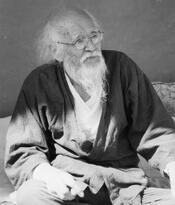
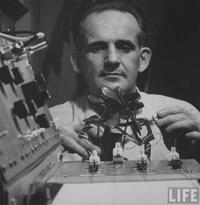
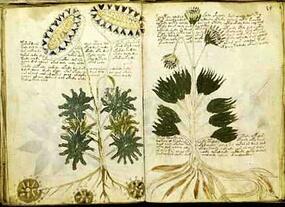
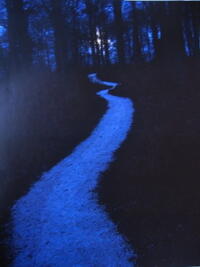
Masanobu Fukuoka, Cleve Backster, The Voynich Manuscript, Night Walk by Andy Goldsworthy
Literature
- Arber, A. (1957). The Manifold and the One. John Murray Publishers.
- Backster, C. (2003). Biocommunication with Plants, Living Foods, and Human Cells. White Rose Millennium Press.
- Peter W. Barlow (2008). “Reflections on ‘plant neurobiology.’” BioSystems 92, pp. 132–147.
- Bey, H. (1996). Millennium. Autonomedia & Garden of Delight.
- Beyst, S. (2002). “Andy Goldsworthy: The Beauty of Creation.” Retrieved 01 February 2010 from http://d-sites.net/english/goldsworthy.htm
- Brand, S (1999). The Clock of the Long Now: Time and Responsibility. Basic Books.
- Brand, S. (2009). Whole Earth Discipline: An Ecopragmatist Manifesto. Viking Penguin.
- Fukuoka, M. and Metreaud, F. P. (1990). The Natural Way of Farming: The Theory and Practice of Green Philosophy. Japan Publications.
- Hazell, D. (2007). The Plants of Middle-Earth: Botany and Sub-creation. Kent State University Press.
- Highley, S. L. (2007). Hildegard of Bingen's Unknown Language: An Edition, Translation, and Discussion. Palgrave Macmillan.
- Holmgren, D. (2002). Permaculture: Principles and Pathways Beyond Sustainability. Holmgren Design Services.
- Hort, A. (1938). The Critica Botanica of Linnaeus. Ray Society.
- Kennedy, G. (2005). The Voynich Manuscript: The Unsolved Riddle of an Extraordinary Book which has Defied Interpretation for Centuries. Orion Publishing.
- Lansing, J. S. (1991). Priests and Programmers: Technologies of Power in the Engineered Landscape of Bali. Princeton University Press.
- Linnean Herbarium: http://linnaeus.nrm.se/botany/fbo/welcome.html.en
- Lionni, L. (1978). Parallel Botany. Alfred A. Knopf.
- Lowenstein, O. (2004). “Beauty in the Brand: The work of Andy Goldsworthy as challenge to radical relativism.” Retrieved 05 May 2006 from http://www.fourthdoor.co.uk/unstructured/unstructured_03/05.html
- Jarry, A. (2001). Adventures in Pataphysics: Collected Works I. Atlas Press.
- Kellaway, D. (1996). Women Gardeners. Virago Press.
- Kuzmanovic, M. and Gaffney, N. (2007). “groWorld HPI: Speculation on the evolution of human-plant interactions.” Retrieved on 01 February 2010 from Mutamorphosis: Challenging Arts and Sciences website: http://mutamorphosis.wordpress.com/2009/02/28/groworld-hpi-speculations-on-the-evolution-of-human-plant-interactions-2/
- Maas, W. and Pasquinelli, M. “Urbanibalism.” Retrieved on May 2010 from http://www.urbanibalism.org/about
- Mahanti, S. Acharya. Jagadis Chandra Bose. Retrieved 01 February 2010 from Vigyan Prasar Science Portal website: http://www.vigyanprasar.gov.in/scientists/JCBOSE.htm
- McDonough W. & Braungart M. (2002)Cradle to Cradle documantary see: http://tegenlicht.vpro.nl/afleveringen/2006-2007/afval-is-voedsel-deel-1.html and http://tegenlicht.vpro.nl/afleveringen/2007-2008/het-nieuwe-ondernemen/afval-is-voedsel-deel-2.html
- McKenna, T. (1992). “Plan/Plant/Planet.” In McKenna, T. (ed.). The Archaic Revival. HarperCollins.
- Mehta, G.K. and Tada, K. (2008). Japanese Gardens: Tranquility, Simplicity, Harmony. Tuttle Publishing.
- Pollan, M. (2002). The Botany of Desire: A Plant’s-Eye View of the World. Random House.
- Pollan, M (2007). The Omnivore's Dilemma: A Natural History of Four Meals. Penguin.
- Roth, S. (2000). “The Cosmic Vision of Hildegard of Bingen in The Ecologist.” Retrieved on 01 May 2008 from http://findarticles.com/p/articles/mi_m2465/is_1_30/ai_59520592/
- Schroeder, K. (2001). Ventus. Tor Science Fiction.
- Schroeder, K. “Thalience.” Retrieved on 22 July 2008 from http://www.kschroeder.com/my-books/ventus/thalience
- Serafini, L (1981). Codex Seraphinianus. Franco Maria Ricci.
- Stephenson, N. (2008). Anathem. William Morrow.
- Sterling, B. Retrieved on 10 October 2010 from http://www.viridiandesign.org/notes/1-25/Note%2000023.txt
- Theroux, M. (1997). “Detecting Biodynamic Signals.” Retrieved 01 February 2010 from Journal of Borderland Research website: http://journal.borderlands.com/1997/detecting-biodynamic-signals/
- Von Bingen, H. trans. Newman, B. (1998) Symphonia: A Critical Edition of the Symphonia Armonie Celestium Revelationum. Cornell University Press.
- “Voynich Manuscript.” Retreived on 10 August 2011 from http://beinecke.library.yale.edu/digitallibrary/voynich.html
- Whitman, W. “Song of Myself.” Retrieved on 05 May 2009 from http://www.daypoems.net/plainpoems/1900.html
- Wilson, E. O. (1998). Consilience: The Unity of Knowledge. Knopf.
- Wilson, P.L. and Weinberg, B. Eds. (1999). Avant Gardening: Ecological Struggles in the City and the World. Autonomedia
- Wright, J. A “Blessing.” Retrieved on 10 November 2007 from http://www.poemhunter.com/poem/a-blessing/
Related people and projects
- groWorld is an initiative of FoAM. http://fo.am/groworld
- groWorld pages in progress and related reading: http://lib.fo.am/project_groworld
- ARG Tutorial at FoAM: http://lib.fo.am/arg_tutorial
- LIREC. http://lirec.org
- gRig. http://fo.am/grig
- Six to Start. http://www.sixtostart.com
- Tale of Tales. http://www.taleoftales.com
- Stevie Wishart. http://www.steviewishart.com
- Urbanibalism. http://www.urbanibalism.org
- Loop.ph. http://loop.ph
- Metabolicity. http://www.metabolicity.com
- Biomodd. http://www.biomodd.net
- Phoef. http://fo.am/phoef
- Un-Fiction. http://un-fiction.blogspot.com
- Art in the Biotech Era. http://www.eaf.asn.au/biotech/biotech.html
- fluxus. http://www.pawfal.org/fluxus
- The Game is Up! http://vooruit.be/en/serie/44
- Maki Ueda. http://ueda.nl
A few excerpts from groWorld articles
Culture – in the sense of cultivation of minds and behaviors – is one of the most enduring phenomena through which humans shape the world. Culture leaves persistent human hand-prints on the biological environment, both enhancing and depleting ecosystems. Some preindustrial cultures saw themselves as a part of ever-widening cycles of nature. We can still experience their silent memorials in the form of animist and Buddhist temples in Asian landscapes, or pagan sites scattered throughout Europe. With the advent of the industrial age, human culture became increasingly divorced from non-human nature, so that the two evolved in parallel for a while (with brief interjections of movements such as Romanticism or Art Nouveau). More recently, culture and nature have begun to converge again – in the unlikely sites of failed industrial experiments. The Chernobyl “involuntary park” is a marvel of biodiversity and adaptation to a technological disaster. Abandoned factories in the German Rühr are now colonised by cultural initiatives, such as the Zollverein. Both culture and nature are slow but tenacious forces often marginalised in a world dominated by economic rationalism. They are messy tangles of emotional, spiritual and physical values, irreducible to simple graphs and statistical analysis, and as such are often ignored in our current fast-paced global society.
On the other hand, technology – another human contribution to the planetary ecosystem – is embraced by the same economic and political powers as a panacea to most contemporary challenges, from environmental turbulence to financial crises. From prehistoric seed-collecting and early agricultural ploughs through to nanotech, technology has become a persistent mark of humanity, in the shape of tools and techniques through which we analyse and interact with the world. Although technology has had a substantial influence on culture and nature (digital technology being the most recent example), it can never fill the cultural void left in the wake of the erosion of the grand narratives of the 20th century. Technology in isolation cannot provide truly encompassing visions of culture, even though humanity has attempted to understand culture (and the whole universe) in terms of technological models – as clockwork, steam machine, or computer. The limitations of these models have become gradually apparent as science (and common sense) has dug deeper into the fundaments of life. Now, after ages of superimposing technological worldviews on nature, perhaps it is time to superimpose a natural worldview on technology. groWorld: Experiments in vegetal culture
As a botanical parallel to the oft misunderstood field of HCI - Human Computer Interaction, HPI - Human Plant Interaction, explores the nature of surfaces and processes required to facilitate mutually beneficial interaction between humans and plants.
HPI necessarily takes a symbiotic approach, being shaped by the questions it poses, such as; how can this two-way interface be realised? What assumptions are we making with regards to how we understand humans and plants? Do we need individual, specialised interfaces for each species, language or alkaloid, or are there more general approaches? How would they work? Where, or what is the point of contact between the humans and plants? How do we make the transition from machinic to organic? From boolean logic systems to systemic ecologic? What changes are required, and what further changes would occur in the plants, or humans using such interfaces? How does the nature of time, place and metabolic byproducts differ on each side of these interfaces? Are they reconcilable, or even mutually explicable? What can we learn from each other? How can we form a closer symbiosis and better understanding between the human and vegetable kingdoms once we open the gates between them? Communication, or pollination? groworld_hpi
“There are in all extensions of human power, or additions to human knowledge, various collateral influences, besides the main and primary object attained.” A.A.L
With the understanding that we are a part of an interconnected and interdependent planetary eco-system, contemporary human culture moves slowly from a culture of consumption and segregation to a culture of participation, integration and generation. Our technological inquiry, into the minutae of molecules, atoms and bits, is reaching the limits of rational reductionism and rediscovering the robust beauty of growth and interdependence in complex systems – from food to fabrics, from genetics to global networks. We are beginning to see design which aims to produce and recycle, rather than relentlessly consuming and wasting. We suggest that these changes in contemporary cultures, economies and technologies are beginning to resonate with the characteristics of our close neighbours in the domain of eukarya - The Plants.
Interacting with entities whose logic and communication patterns are not readily comprehensible to humans should be approached with care. As we move beyond a world dominated by information technology into an era in which the biological world is beginning to penetrate the 'technosphere', different modes of interaction may be required. We propose that parallel to the field of HCI - Human Computer Interaction, we should explore the field of HPI - Human Plant Interaction. HPI explores the nature of surfaces and processes required to facilitate reciprocal interaction between humans and plants. Historically, interaction between humans and plants has ranged from parasitic to collaborative. However, for HPI to become mutually beneficial, a symbiotic relationship may be most appropriate. Before a Human-Plant symbiosis becomes possible, we need to ask ourselves why, where and how can this two-way interface be realised? What cognitive and social biases need to be overcome? Can we develop a generalisable approach to interfacing with the entire plant kingdom, or do we require localised interactions between different species, ecotopes or alkaloids? How do we bridge the differences of time and place on each side of human-plant interfaces? And by rediscovering the value of humility, can humans learn how to become part of systems more complex, older and stranger than themselves? Cursory Speculations on HPI
Current local, translocal and global communication patterns seem to be reflecting the turbulent conditions of our ecological, economic and social habitats. The media, in their myriad shapes and forms, provide variously coloured lenses through which to watch this turbulence. Mass media, with their focus on easily digestible sound-bites of information, often oversimplify the interrelatedness between issues in an attempt at clarity. Information found on the internet can be rich and varied, often requiring a healthy dose of scepticism concerning the tangled paths of interpretation and translation from (original) sources. Social media can provide a diversity of opinions, experiments and other curiosities. Plenty of consumption, plenty of communication and plenty of action, adding additional strange attractors to existing chaotic situations. A leitmotif throughout the various communication channels is a (quite legitimate) sense of urgency. Frequently the responses to this urgency take the form of the fallacy 'We must do something. This is something. Therefore, we must do it'. It is not clear how much (if any) thought goes into considering the wide range of answers to the more involved questions such as - what can be done; what can be done now; what can be done now that is relevant; what can be done now that will set the foundation for future improvements; and most importantly, what can be done that won't end up making things worse?
Much of the current thinking about the sustainability of our lifestyles is predominantly future focused – in 2020, by 2050, in 5, 15 or 50 years – things will change for the better (according to neo-liberal optimism), or for the worse (according to some scientific projections, or deep green pessimism). In the mean time, the future has arrived and begun to unravel into the past, quietly and unnoticed. In the rush to predict or change the future, we all too easily neglect the present, the only time in which we can actually influence and exercise our possible futures. By becoming more consciously present in the 'here-and-now', we can begin to discern a continuous string of present moments stretching into the mythical 'long term'. We cannot sacrifice the present for an unattainable future, yet we cannot retreat into an 'innocent' past which spawned our present problems. So, the question becomes; what can we do to live more fully in the present, work toward a more luminous future, while drawing inspiration from the past? Luminous Green
Permaculture design principles
—David Holmgren
[1] Observe and interact; beauty is in the eye of the beholder
[2] Catch and store energy; make hay while the sun shines
[3] Obtain a yield; you can't work on an empty stomach
[4] Apply self regulation and accept feedback; The sins of the fathers are visited on the children unto the seventh generation
[5] Use and value renewable resources and services; let nature take its course
[6] Produce no waste; a stitch in time saves nine / Waste not, want not
[7] Design from patterns to details; can't see the wood for the trees
[8] Integrate rather than segregate; many hands make light work
[9] Use small and slow solutions; the bigger they are, the harder they fall
[10] Use and value diversity; don't put all your eggs in one basket
[11] Use edges and value the marginal; don't think you're on the right track just because it is a well beaten path
[12] Creatively use and respond to change; vision is not seeing things as they are, but as they will be.
